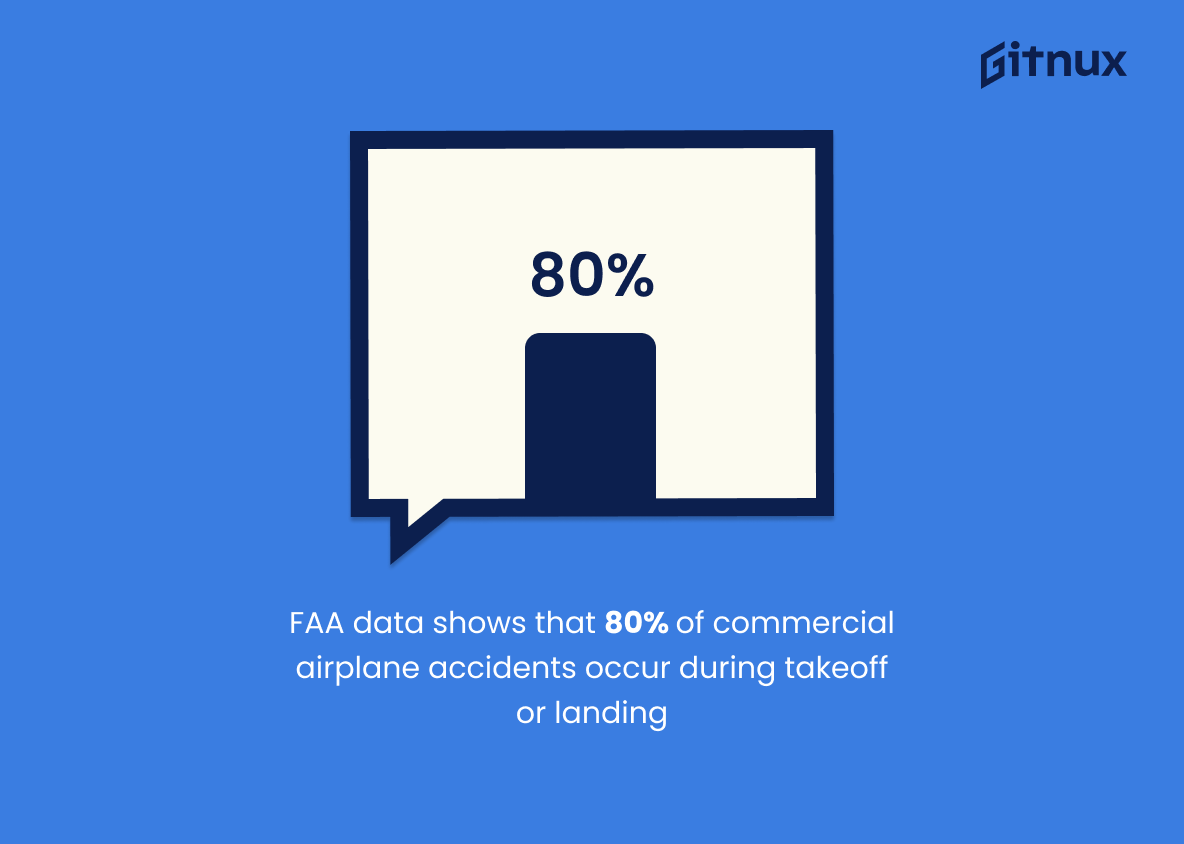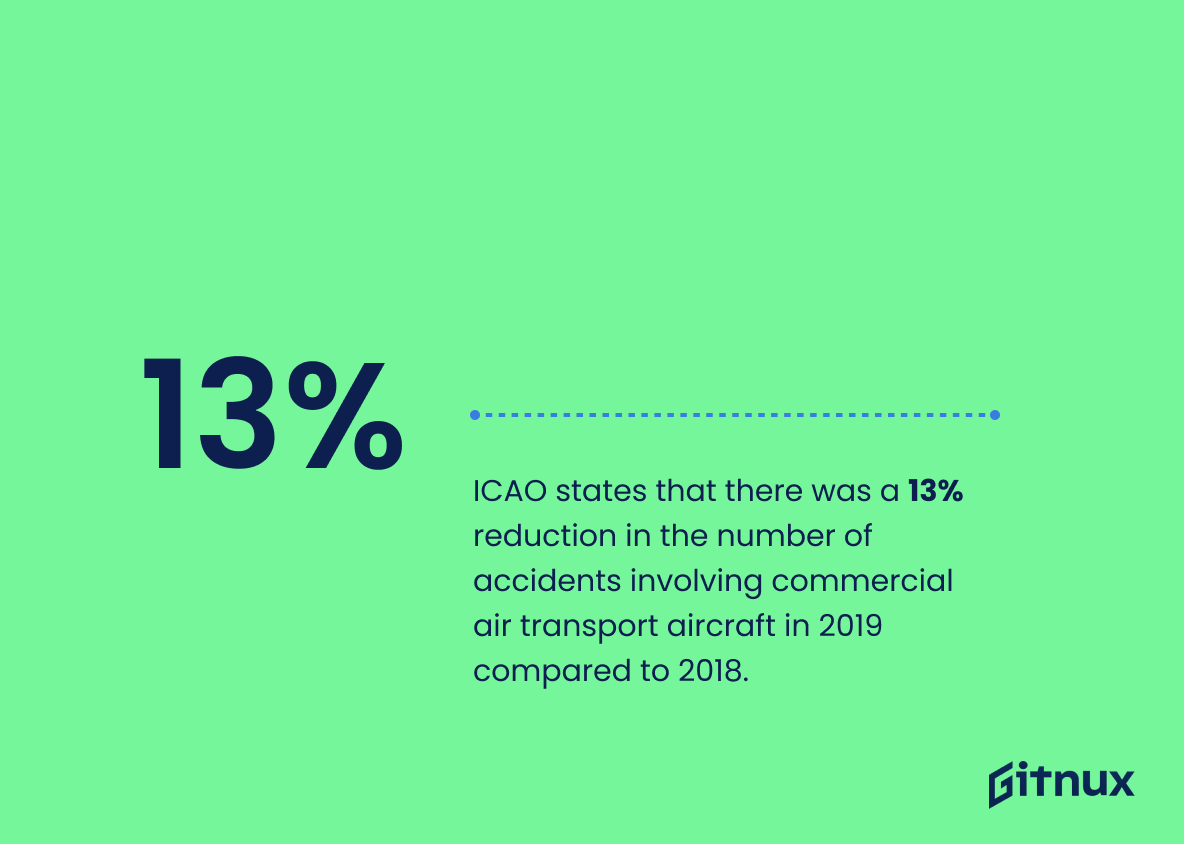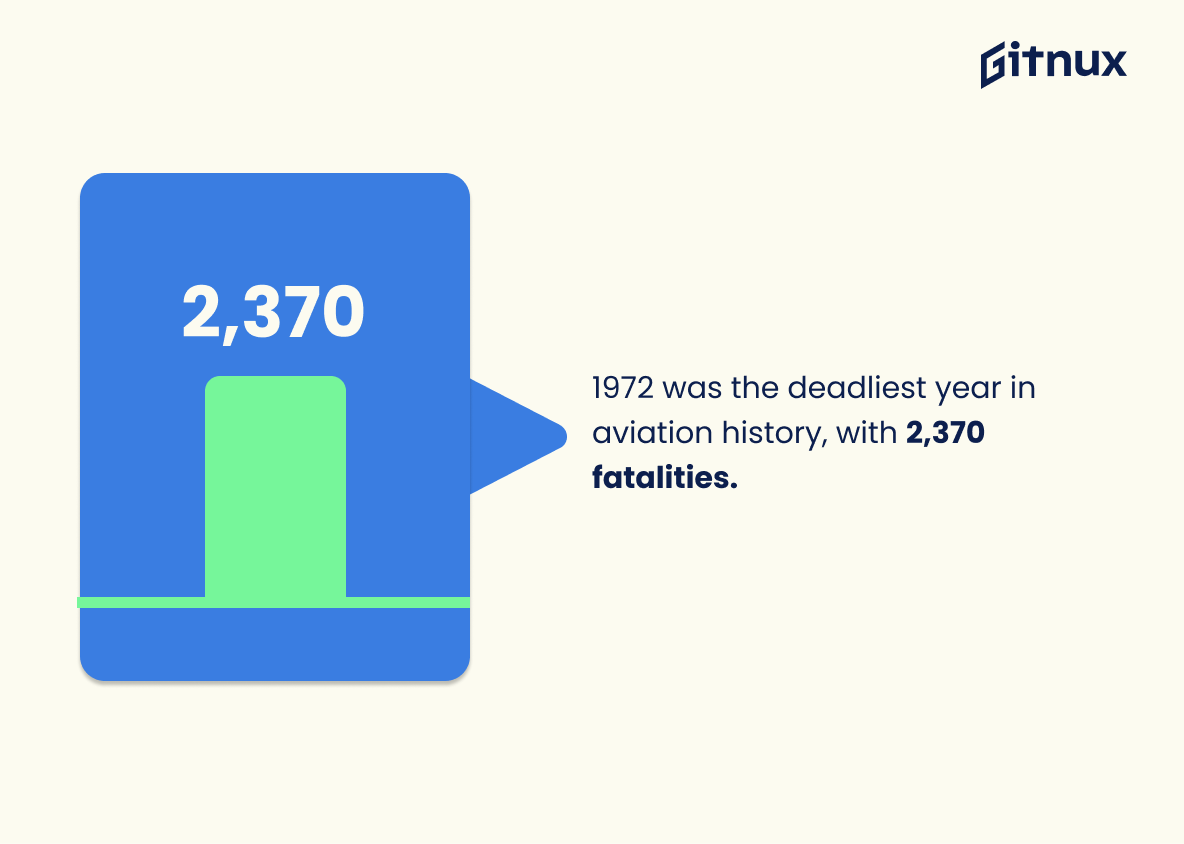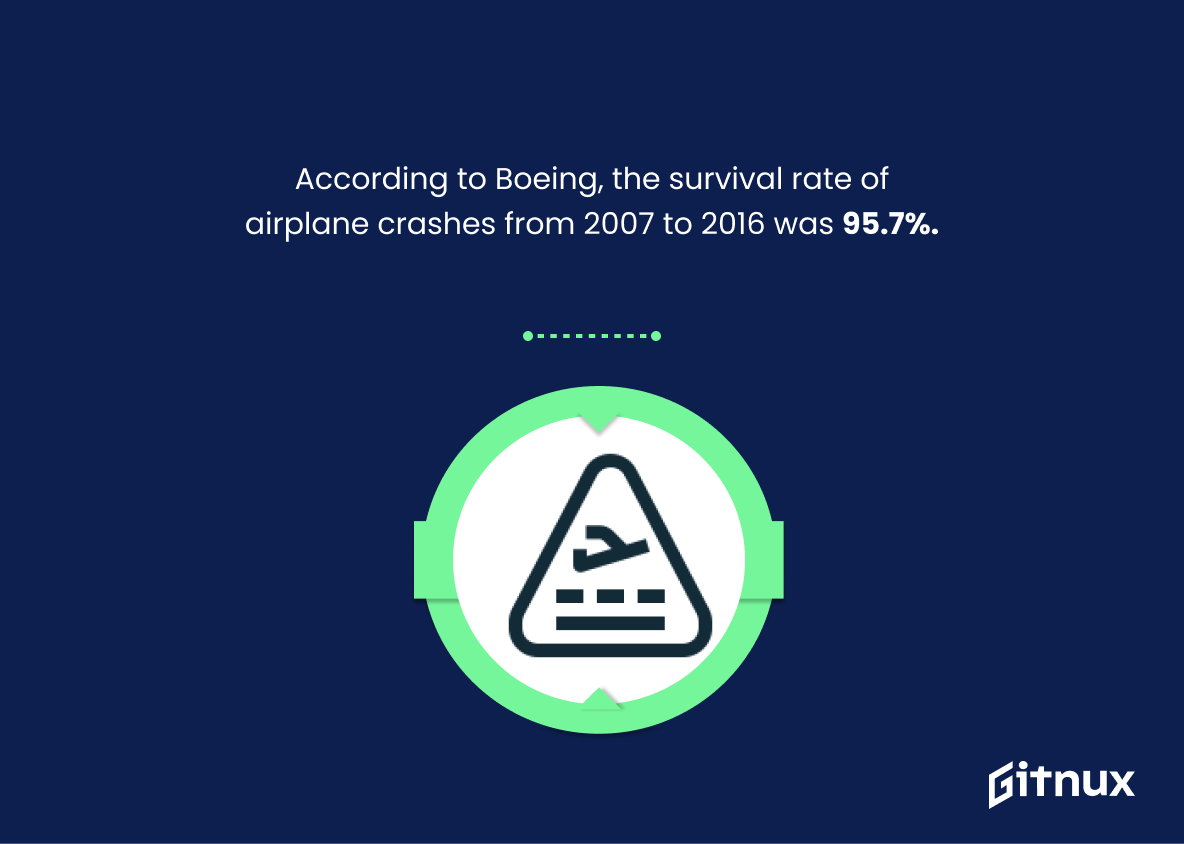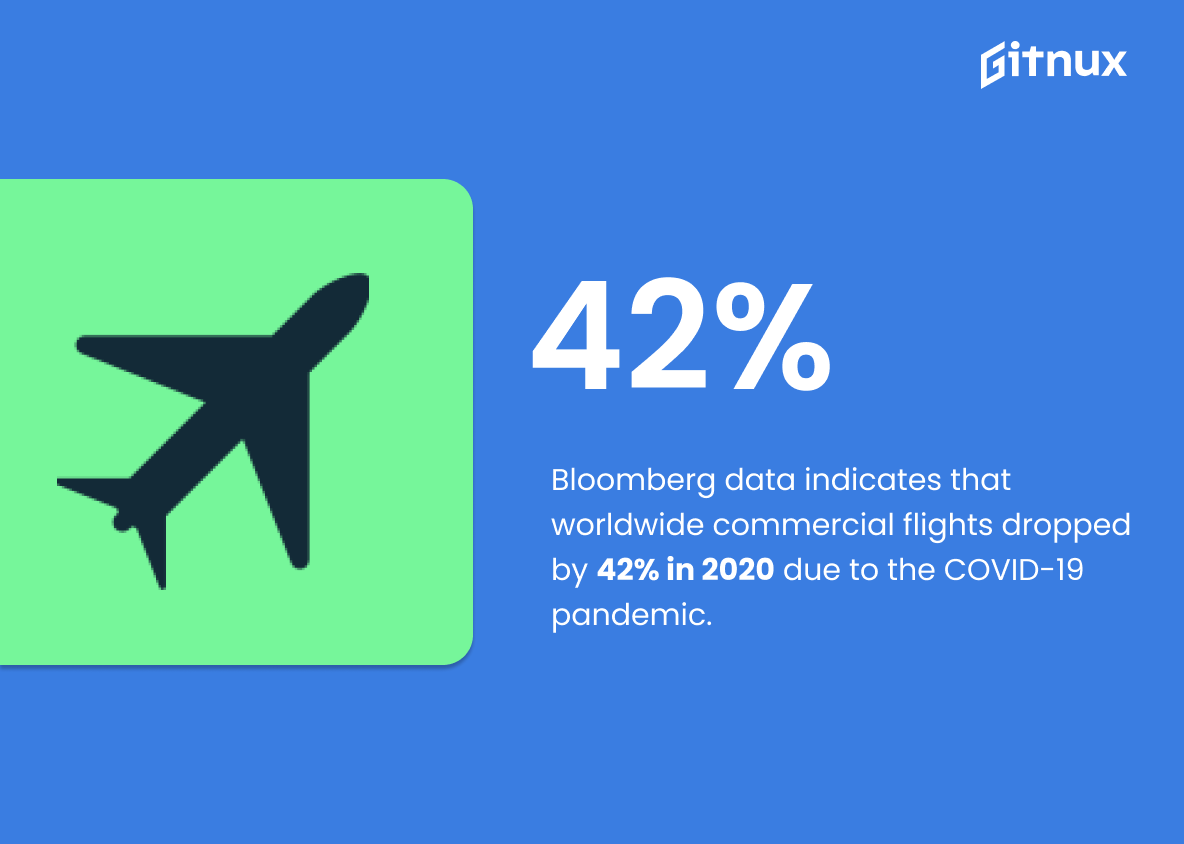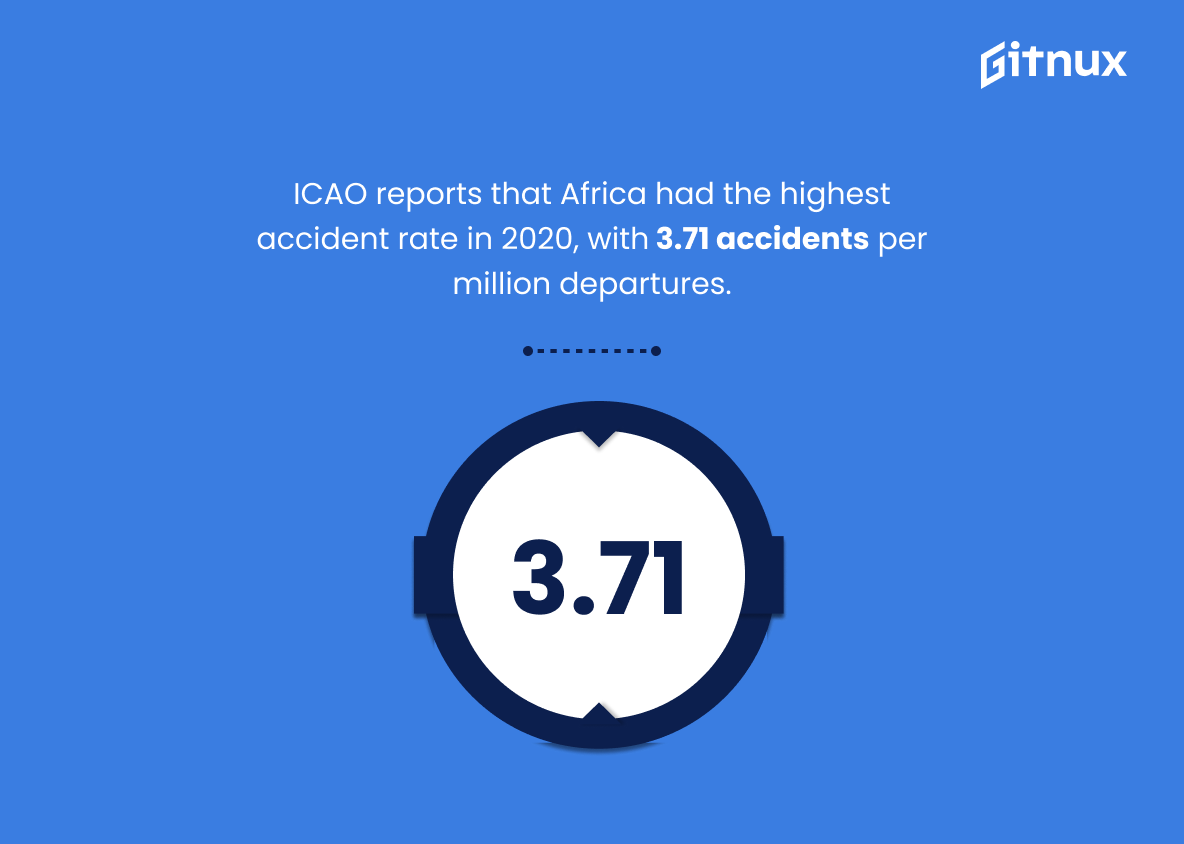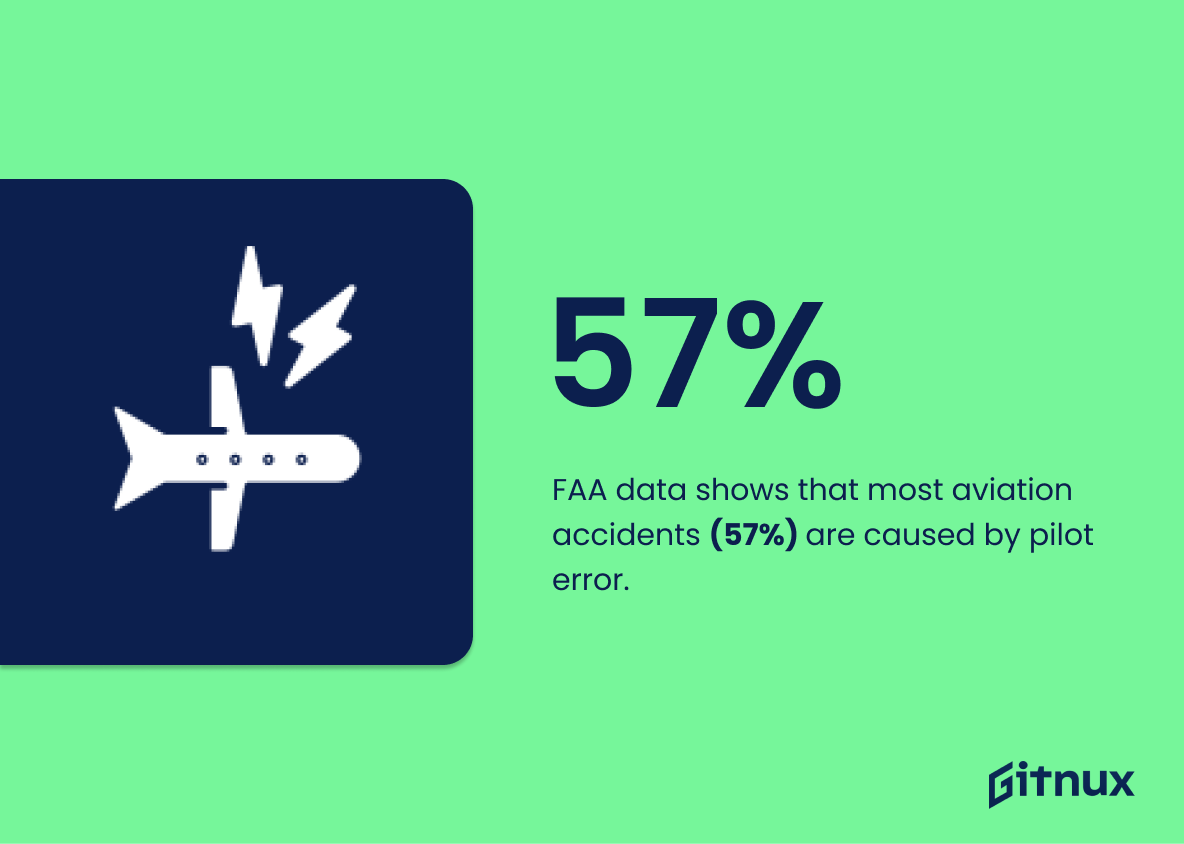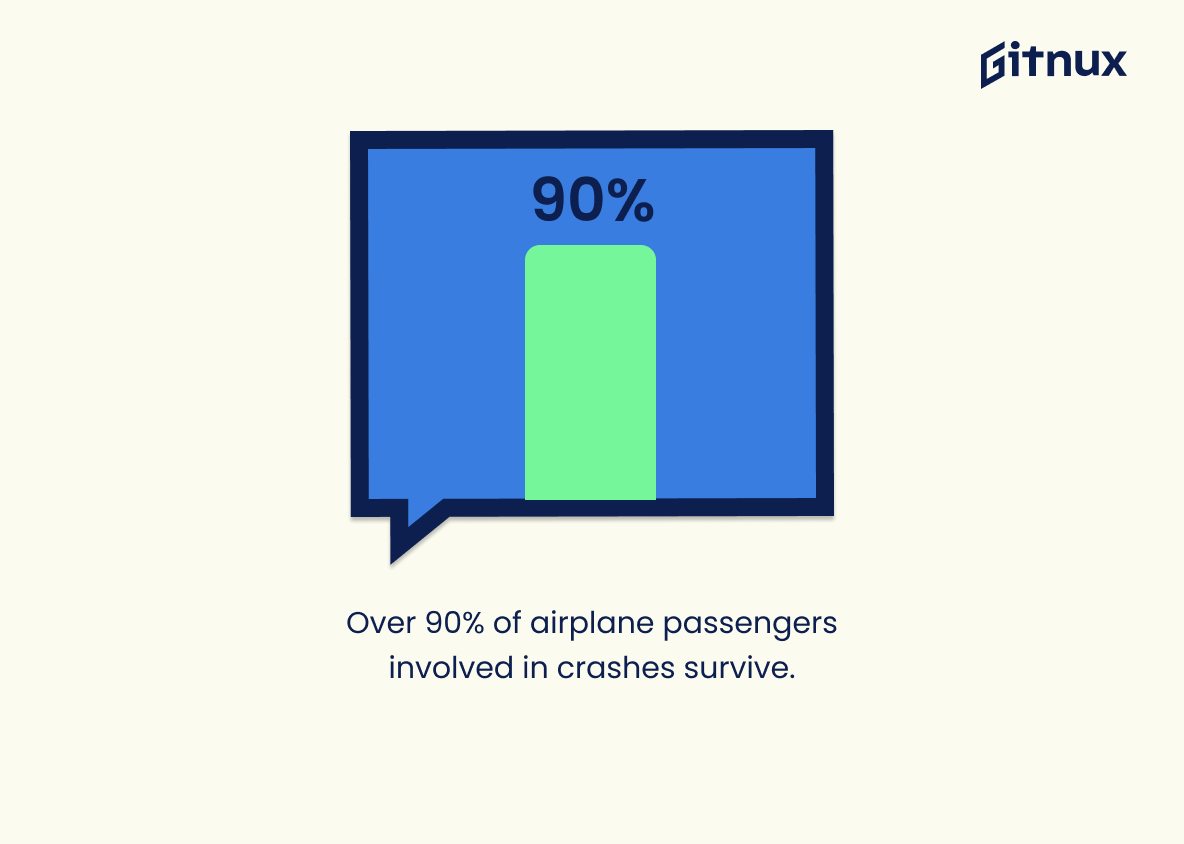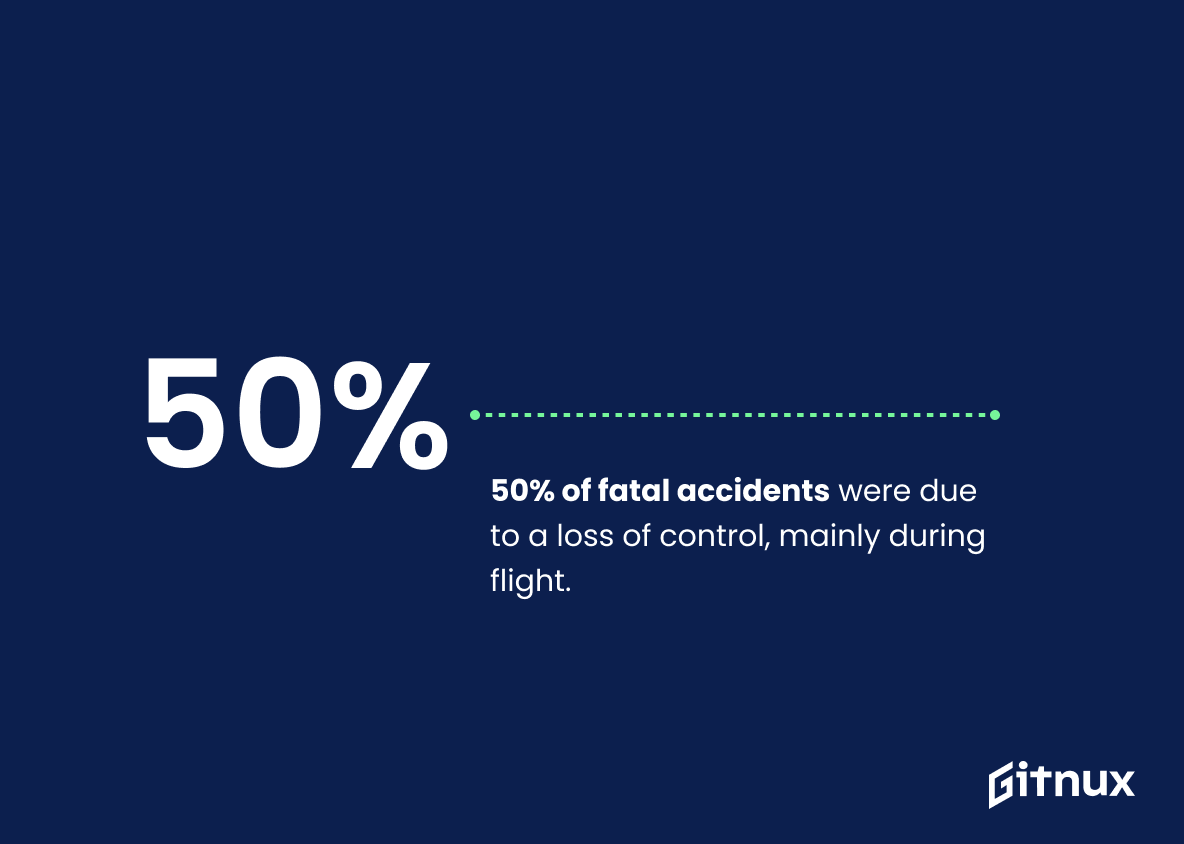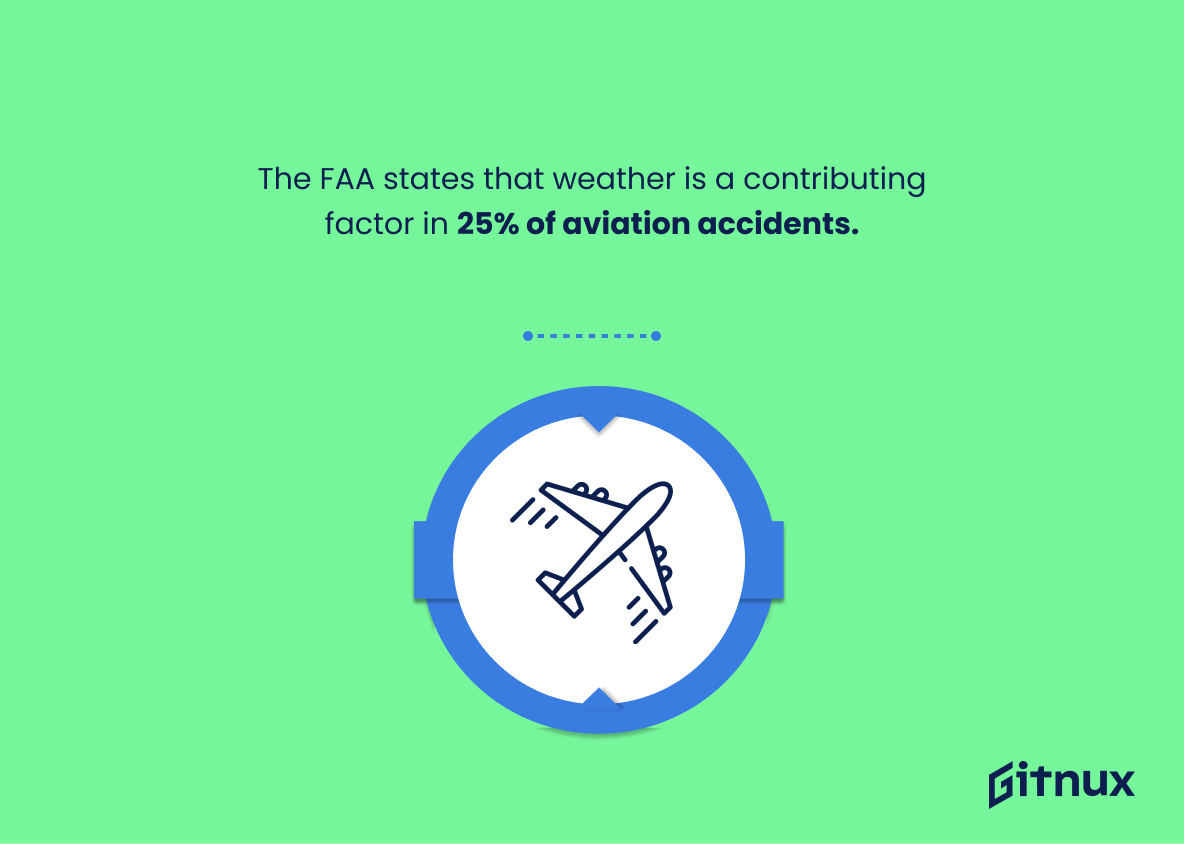Makeshift armrest battles, turbulence fear, unsettling noises, anxiety over an honest dialogue about airplane safety often occupies our mind when we soar the skies. Welcome to our comprehensive blog post that aims to put your fears to rest. We shed light on airplane safety statistics, presenting an empirical lens to the reality of air travel. We delve into the numbers, probabilities, and facts, trawling through decades of aviation data. By the time you reach the end of this blog post, we hope the fear of the unknown will unclasp its firm grip, providing a sense of security and confidence every time you buckle up for your journey across the clouds.
The Latest Airplane Safety Statistics Unveiled
As per the National Safety Council, the odds of dying in a car crash (1 in 102) are far greater than on a commercial flight (1 in 205,552).
Highlighting these striking odds plays an instrumental role in underscoring the safety of air travel. In a world teeming with variety of transport options, it’s pivotal to assess the risk associated with each. Nestled within the heart of a discourse about airplane safety statistics, this staggering comparison paints a clear portrait of relative safety. Despite public fear often being more attuned to the dangers of flying, it reveals that the risk of meeting one’s untimely end in a car is considerably higher, tipping the scales of perception versus reality. Therefore, it triggers a shift in thinking, making readers reconsider their preconceived notions and further appreciate the efforts invested in aviation safety protocols to maintain the impressive safety record.
Federal Aviation Administration (FAA) data shows that 80% of commercial airplane accidents occur during takeoff or landing.
Delving into the Federal Aviation Administration (FAA) data reveals a startling revelation that 80% of commercial airplane accidents transpire during takeoff or landing. The underlying significance of these figures, when put in the context of an article on Airplane Safety Statistics, is multilayered. More than merely presenting catastrophic moments, these figures reflect critical phases of each flight that could benefit from amplified attention and risk mitigation initiatives.
Highlighting this statistic amplifies the need for airlines, aviation authorities, and safety regulators to zoom in on these particular fractions of a flight journey. Innovations in training, technology, and safety protocols could immensely trim down accident probabilities. Ultimately, these insights are intended not to breed fear, but to usher in heightened safety measures – improving airplane travel’s reliability one takeoff and landing at a time.
International Civil Aviation Organization (ICAO) states that there was a 13% reduction in the number of accidents involving commercial air transport aircraft in 2019 compared to 2018.
Highlighting a 13% reduction in commercial air transport accidents in 2019, as reported by ICAO, serves as a beacon of assurance in the realm of aviation safety statistics. It paints a compelling picture of improvement, shedding light on the efficacy of ongoing safety measures and protocols. In our quest to delve deep into the realm of airplane safety statistics, this number isn’t just a cold, hard fact; it’s a testament to the industry’s relentless efforts to rectify the flaws and bolster air travel safety. It’s like a milestone along the winding road of advancements towards a safer sky for all.
According to the Bureau of Aircraft Accidents Archives, 1972 was the deadliest year in aviation history, with 2,370 fatalities.
Highlighting the grim data from 1972, the deadliest year in aviation history as noted by the Bureau of Aircraft Accidents Archives, serves as a stark reminder of how far the aviation industry has come in terms of safety. Amidst the chilling tableau of 2,370 deaths, one can trace the impetus that spurred revolutionary changes in flight regulations, technological advancements, pilot training, and safety measures. This distressing landmark year serves as a compelling comparison tool, allowing us to draw clear lines from past adversity to present achievements in air travel safety. It also underlines the constant need for vigilance and innovation in keeping up with safety standards to prevent a recurrence of such a catastrophe.
According to Boeing, the survival rate of airplane crashes from 2007 to 2016 was 95.7%.
Highlighting Boeing’s report of a 95.7% survival rate during airplane crashes from 2007 to 2016 underscores a compelling narrative that air travel is significantly safer than perceived. Contrasting common fears and apprehensions about flying, this statistic injects a potent dose of reality into the conversation on airplane safety. It serves as a beacon of reassurance, altering perceptions and inviting readers to examine air travel with fresh eyes. In a blog post exploring Airplane Safety Statistics, such a figure can act as a cornerstone, shifting the focus from fear to facts and providing a solid foundation for further discussion on protocols, developments, and safety enhancements in aviation history.
Bloomberg data indicates that worldwide commercial flights dropped by 42% in 2020 due to the COVID-19 pandemic.
The dramatic delve of 42% in worldwide commercial flights in 2020, according to Bloomberg, paints a critical image for our discussion on Airplane Safety Statistics. This monumental shift, directly influenced by the Covid-19 pandemic, punctuates the canvas of regularity, bidding us to question and investigate how such a reduction has impacted safety metrics in aviation. Has this decrease given rise to enhanced airplane maintenance, thus engendering safer skies? Or has it had the opposite effect, inducing adverse consequences such as rusting skills for pilots due to reduced flying hours? Pondering these queries shifts the lens of the conversation, ensuring we appreciate the intertwined relationship between aviation activity and safety outcomes.
The Federal Aviation Administration reports that from 2015 to 2020, over 926 lives were lost in general aviation accidents.
The revelation of 926 lives tragically ending in general aviation accidents between 2015 and 2020, as reported by the Federal Aviation Administration, paints a somber picture. It unequivocally underscores the gravity of the situation and acts as a wake-up call to amplify efforts in ensuring airplane safety. Put in perspective, this stark statistic becomes a rallying point in a blog about Airplane Safety Statistics. It amplifies the conversation around the crucial need for constant advancements in safety measures, stricter regulation enforcement, and more rigorous pilot training. As readers digest this information, they understand exactly why innovative safety protocols, checks, and balances in aviation are more than just legal or procedural necessities, they are indeed, life-saving necessities.
According to a survey by Boeing, in the 1960s, there were about 100 fatal accidents per year in commercial flights, but today, the annual average is closer to 10.
This riveting statistic serves as a testament to the colossal evolution of airplane safety measures over the years. It roots our understanding in concrete data and magnifies the monumental advancements that have led from a disquieting 100 fatal accidents per year in the 1960s to merely a tenth of that today. Expressing the safety strides in aviation through numbers adds gravitas, justifying the faith and trust we put into air travel. This illustrates, in no uncertain terms, that stepping onto an aircraft has never been safer, setting apart the story of aviation as one of risk mitigation success. The safety of millions rests on this palpable progress, shining a spotlight on the importance of continued research, training, and advancements in airplane safety.
According to stats by the European Union, there were 18 fatal accidents in the EU in 2019.
In the intricate tapestry of airplane safety statistics, the data provided by the European Union, pointing to 18 fatal accidents in 2019, weaves a telling strand. It paints an impactful picture of the current state of affairs, providing an invaluable barometer to gauge improvements or deteriorations in safety measures. This single number can be a spotlight that triggers crucial conversations about flight safety practices, enabling readers to comprehend the risk associated with air travel. It offers a spark for in-depth analysis, comparison with global trends and evaluation of the effectiveness of safety protocols, enriching the outcomes of the discussion centered on airplane safety statistics.
ICAO reports that Africa had the highest accident rate in 2020, with 3.71 accidents per million departures.
Highlighting the statistics given by ICAO about Africa’s aviation accident rate underscores the crucial urgency and significance of airplane safety issues on the continent. In an analysis on Airplane Safety Statistics, it paints a compelling, if sobering, picture about the risk factor by comparing it to the worldwide standards. This numeric piece of information acts like an alarming siren, alerting authorities, airlines, and travelers alike about the gravity of the matter. It underscores the concrete need for intensifying efforts in airplane safety procedures, training, and regulations in this specific region, which could potentially save numerous lives in the future.
FAA data shows that most aviation accidents (57%) are caused by pilot error.
Underscoring the significance of this statistic emphasizes a crucial perspective: the human element, specifically pilots, play a predominant role in air travel safety. With over half of aviation accidents attributed to pilot error, the implication is clear: enhancing pilot training, decision-making skills, and mental resilience could substantially minimize the risk of incidents. This paints a more nuanced picture of air safety, shifting the focus from mechanical reliability to human factors and thus presenting a compelling case for investment in human-centric strategies.
According to the Aircraft Crashes Record Office in Geneva, over 90% of airplane passengers involved in crashes survive.
An interesting revelation one would derive from this figure is the insight it provides into the efficacy of safety measures in the aviation industry. Contrary to the gruesome images that airplane crashes evoke in most minds, the substantial 90% survival rate challenges common misconceptions and paints a robust picture of the stringent safety protocols in place. Hence, serving as a powerful weapon to allay irrational fears of flight mishaps, it encourages readers to better comprehend the true degrees of risk involved, and appreciate the deliberate efforts of the aviation industry towards ensuring passenger safety.
ACRO statistics reveal that military flights have a higher crash rate than commercial flights.
Highlighting the differential crash rates between military and commercial flights provides crucial insights for the discourse on airplane safety. The stark contrast between the two serves as a revealing indicator, challenging our perceptions and encouraging deeper exploration into the factors that contribute to safer commercial flights. With this knowledge, we can ask informed questions and instigate necessary changes in areas where aviation safety is compromised. Ultimately, this statistic underlines the urgent need for improved safety measures in military aviation while reiterating the relentless efforts to maintain safety standards in commercial aviation.
According to the FAA, 50% of fatal accidents were due to a loss of control, mainly during flight.
Delving into aviation safety, the striking figure by the FAA reveals that a staggering half of fatal accidents are traced back to loss of control, largely amidst flight. This fundamental data underscores the crucial need for comprehensive control management and advanced training for pilots in-flight operations.
Uncovered in the heart of an airplane safety statistics blog post, this paramount fact serves as a wake-up call, instigating thorough investigation into current control systems and procedures. It adds immense value by stirring prioritization of enhanced control techniques and technologies, spotlighting the potential loopholes in safety regulations.
Eurocontrol data shows that there was a 67% decrease in the number of flights in 2020 due to COVID-19 compared to 2019.
Drilling into the heart of airplane safety statistics, the steep 67% plunge in flight numbers in 2020, as evinced by Eurocontrol data, dramatically reshapes our understanding of the aviation landscape during the pandemic. This precipitous fall illustrates not just the immediate impact on the aviation industry, but also carries significant implications for safety trends, accident rates and risk analyses. In fact, fewer flights could mean a lower chance of incidents, leading to a temporary improvement in safety records. On the other hand, the unprecedented disruption could have unforeseen consequences on safety protocols. Thus, this statistic is of paramount importance as we navigate through the atmospheric changes in airplane safety metrics.
ICAO reveals that in 2019, there were 98 accidents, eight of which were fatal, resulting in 240 fatalities.
The statistic shared by ICAO places a magnifying glass to the subject of airplane safety in 2019, showcasing the vulnerabilities present in the sector. In reinforcing the relevance of the subject, it details that out of 98 accidents, eight escalated to fatal circumstances resulting in 240 lives being lost. This raw data is more than just a piece of information; it’s a call to arms for the aviation industry. It illuminates the grave importance of increased safety procedures and advancements, underscoring why our discussion on Airplane Safety Statistics isn’t merely academic—it’s a question of human lives. These 240 souls serve as a stark reminder that the quest for improved airplane safety remains essential and ongoing. And, behind every figure in our article is a life, a story, and a collective responsibility we must continue to address.
The FAA states that weather is a contributing factor in 25% of aviation accidents.
In the realm of airplane safety statistics explored in this blog, the FAA’s declaration that weather plays a role in 25% of aviation accidents emerges as a crucial number. It highlights an aspect of aviation often left to the mercy of nature itself. This statistic impressively underlines the inherent unpredictability of weather and its potential impact on flight safety. This figure serves almost as a wake-up call for stakeholders in the aviation industry, urging them to commit significant resources towards weather prediction and flight simulation technologies. Only by understanding this quarter of the aviation accident equation can we hope to significantly minimize, if not completely eliminate, weather-related flight mishaps.
Conclusion
Flying is safer than ever before due to the stringent safety measures, regulations, and technological innovations that the aviation industry has adopted over the years. The declining trend in airplane accidents and casualties, as testified by the statistics, underscores the efficacy of these safety measures. Still, the industry continues to evolve, working tirelessly to bring the risk close to absolute zero. As passengers, understanding these safety statistics should offer solace and stimulate even more confidence in what is already the safest form of transport. Despite the rare, yet widely publicized incidents, your chances of being involved in an airplane accident are significantly low and getting lower each year.
References
0. – https://www.www.webmd.com
1. – https://www.injuryfacts.nsc.org
2. – https://www.www.boeing.com
3. – https://www.www.bloomberg.com
4. – https://www.www.ntsb.gov
5. – https://www.www.icao.int
6. – https://www.www.baaa-acro.com
7. – https://www.www.eurocontrol.int
8. – https://www.www.faa.gov
9. – https://www.www.easa.europa.eu

